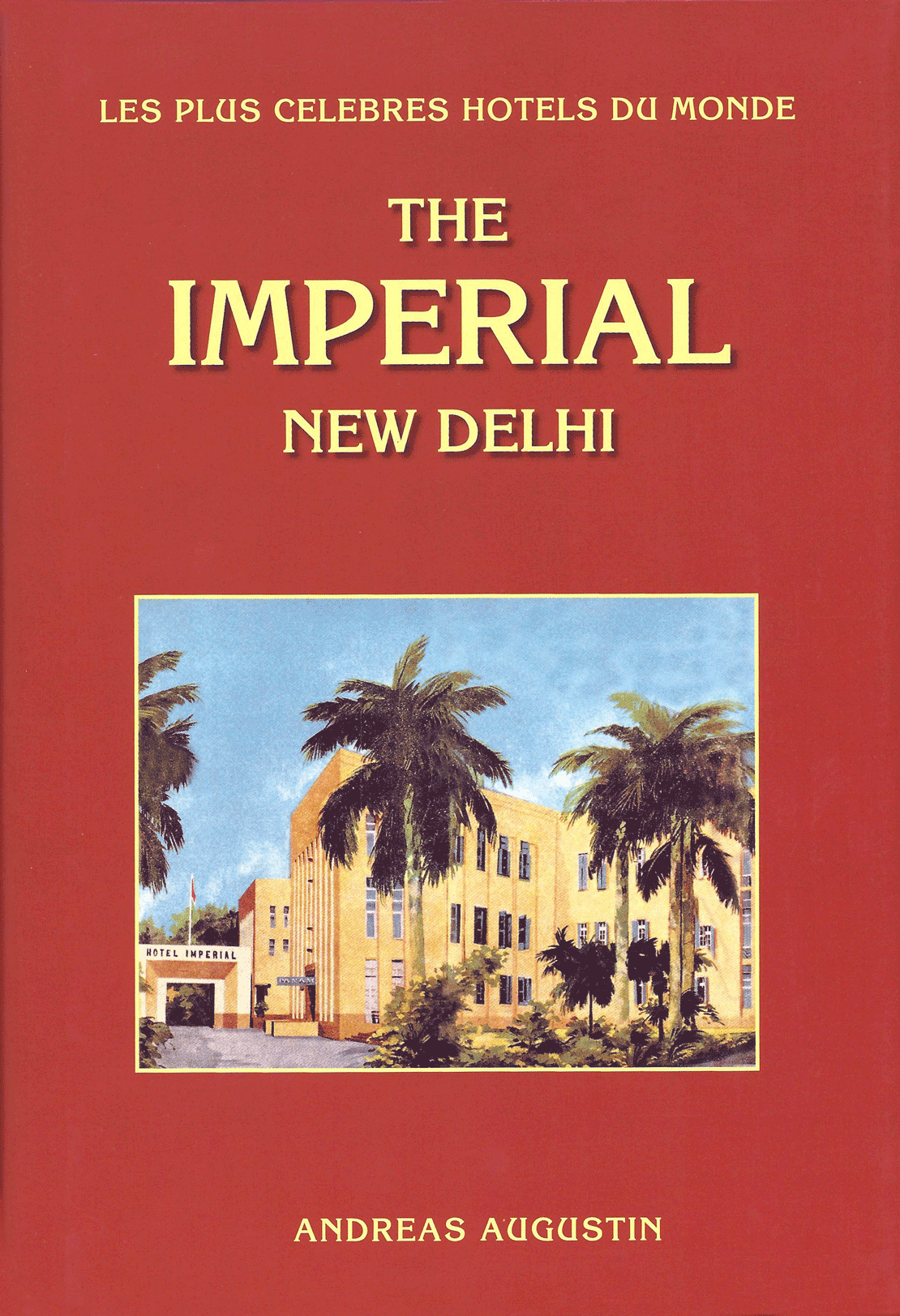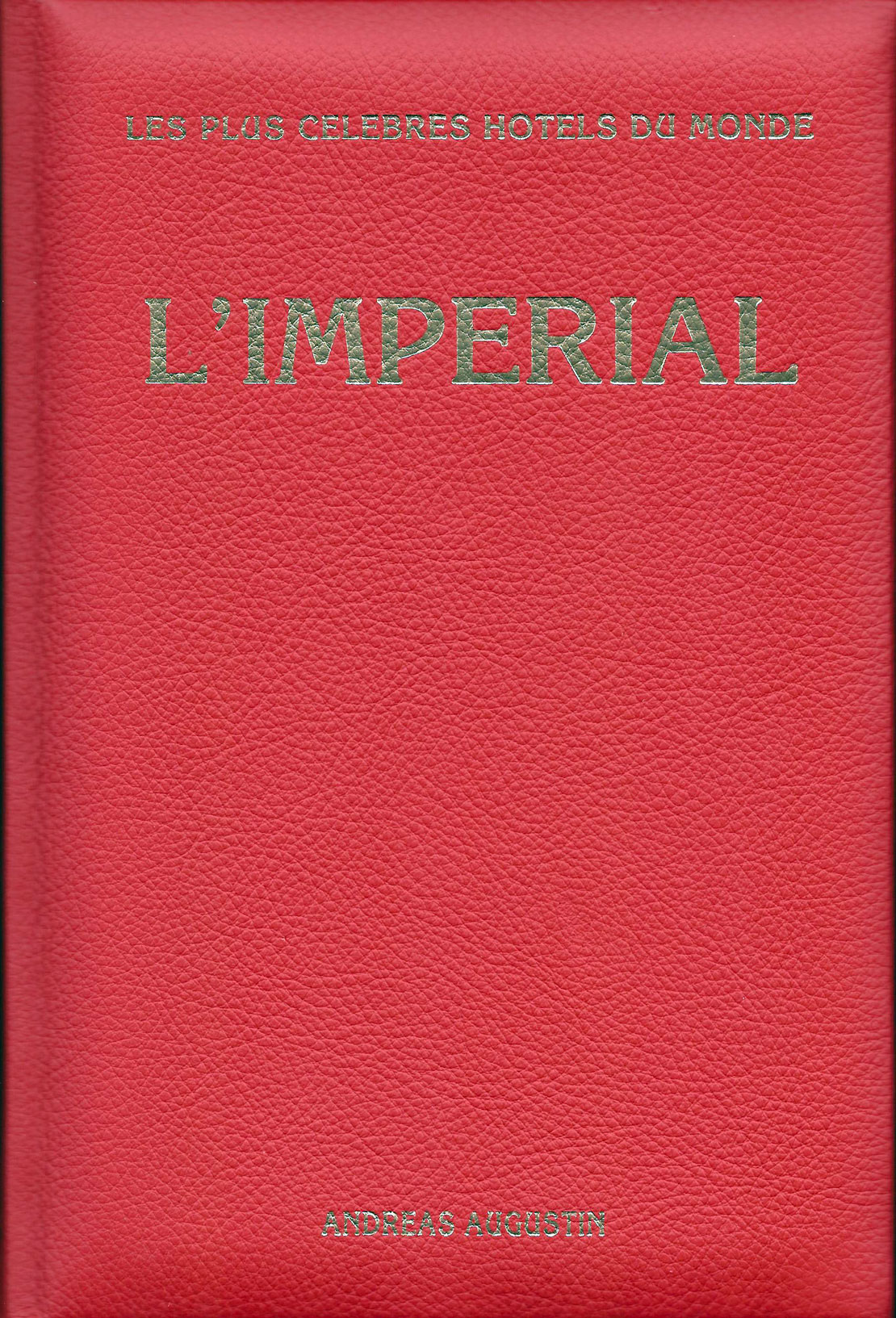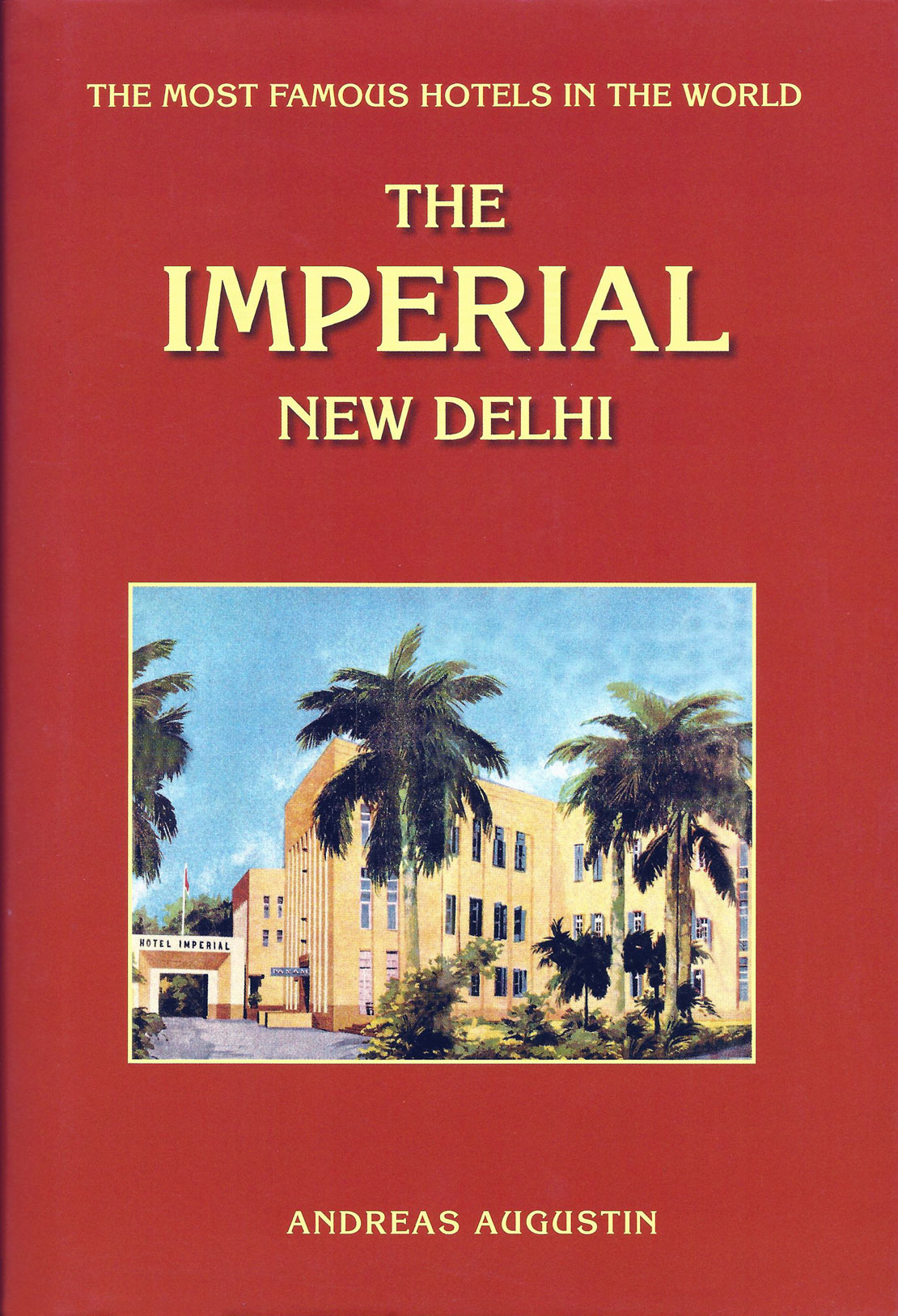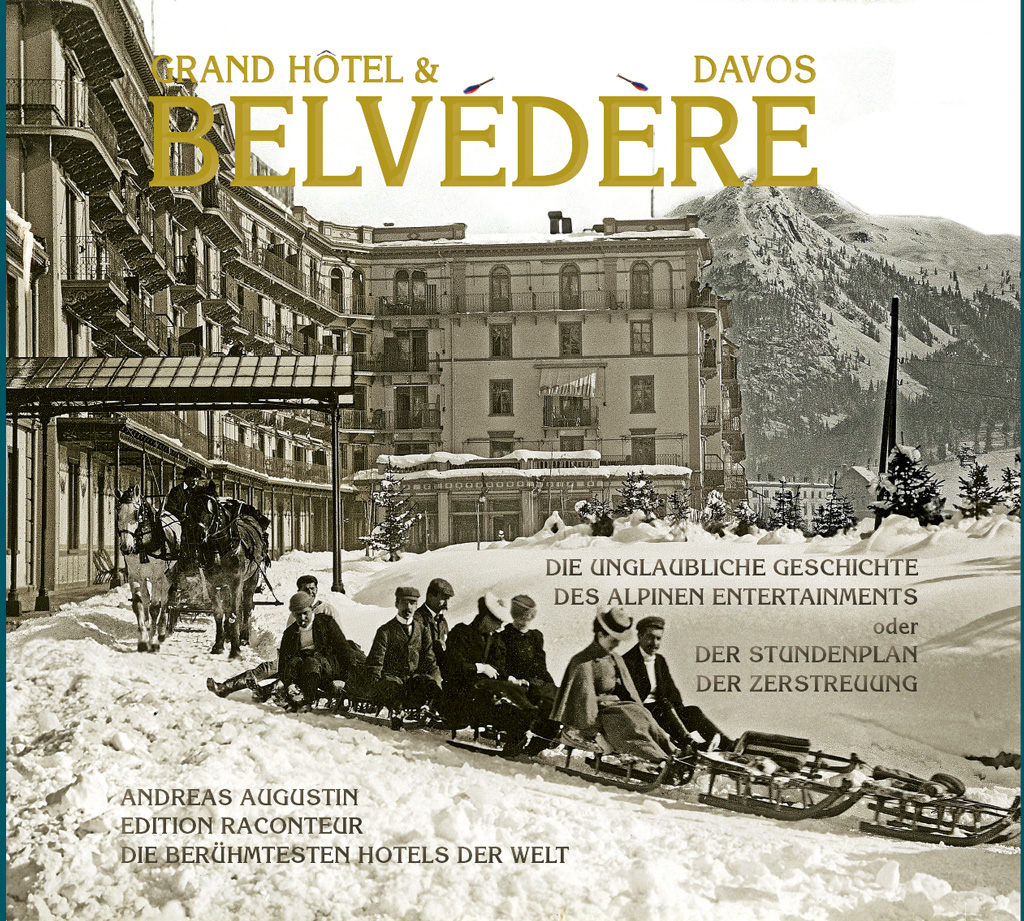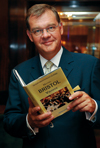The Imperial – New Delhi, India (English Leather Edition)
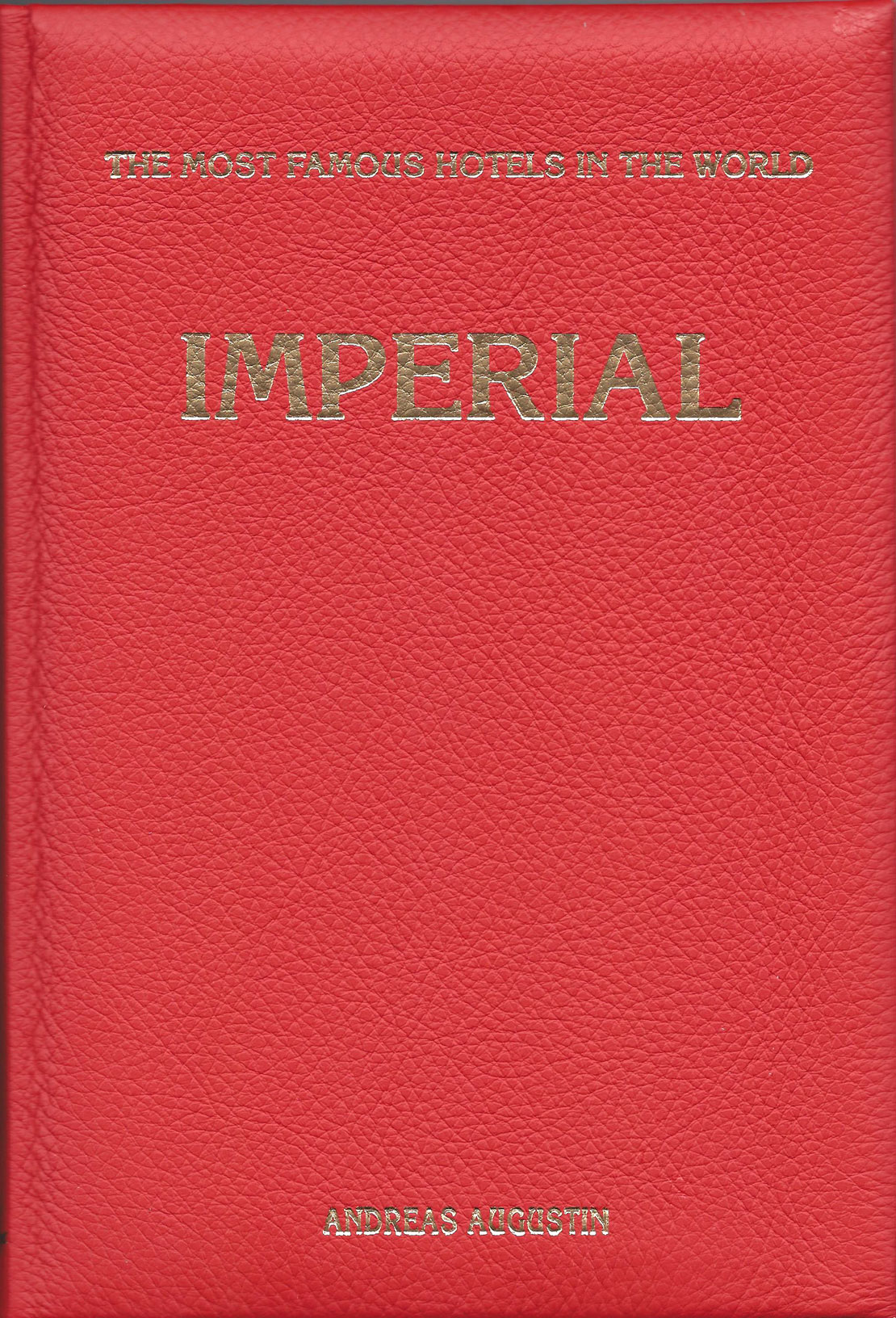
Author
Andreas Augustin
Pages
160
Photographs
Illustrations
180
Leather-bound edition
Yes
Binding
Leather bound / gold stamping
Includes
2 postcards, 2 reading marks (HIS and HERS)
ISBN
3-900692-17-3
Size/Weight
160 x 235 mm, 720 g
Also available in
French
Related Hotel
Price: € 133.00
Add to cartOnly 20 books per language (French is available, too!) were bound in striking red leather. These books are all autographed by the author.
About the book: What do you get when one of the most important Indian constructors of the new city of Delhi meets one of the most ambitious social ladies of the British colonial empire? The answer is simple: The Imperial. This book takes you from George V’s surprising 1911 announcement that made Delhi the new capital of India beyond the last years of the Raj, when the Viceroy’s wife, Lady Willingdon, convinced the eminent constructor of New Delhi, Narain Singh, to build a splendid hotel. We accompany the new hotel, opened in 1936, through the following decades. It hosted lavish colonial parties and served ‘subversive’ Indian nationalists as their base to restore India’s independence after centuries of British rule. Pandit Nehru made the hotel his personal headquarters. Muhammad Jinnah drew up his plans for an independent Pakistan there. The Imperial became the hub of Indian society, from Delhi’s businessmen to Bollywood’s stars, the home for discerning international travellers and the nerve centre of global enterprises. Its unique museum concept makes it the most sought after hotel in India. Make the acquaintance of the famous guests who made The Imperial their home. Meet the wonderful staff providing the necessary ambience. Read about the thrilling moments leading to the creation of Pakistan at the Royal Ballroom and enjoy golden memories of the good old Tavern. Shedding light on the history of this unique hotel, this book reveals the path into its future: the ‘Imperial experience’.
1.
The privileged among us know this special feeling of ‘coming home’ when checking into a hotel. The lovers of fine arts have experienced the deep admiration for a piece of art in a museum. Two emotions of equally satisfying pleasure. Ever thought about checking into a museum? Come with me to The Imperial in New Delhi. Here a fellow student from Klessheim Hotel Management College, Jasdev Singh Akoi, had the idea of merging his hotel with a stunning museum of historic India, displaying some 4,000 items of art. It was one of the most ambitious hotel projects. First of all Jasdev Singh Akoi had to steer the hotel from a severe depression into safe waters, transforming a ghost of a grand hotel into one of the rejuvenated maidens of the Asian hospitality industry. It was a seven days a week job, 18 hours per day, dirty hands. His wife Mira became the master designer, faithful workers including the housekeeper Mrs Sandhu and the carpenter Ratti Ram were at hands completing the monumental tasks. Against all odds Jasdev Singh found arrangements with demanding labour unions after cutting down a work force of 1.200 by fifty percent, earned himself budgets for renovating basics, toured the hills for old British house ware to decorate a coffee shop named Garden Party, renovated rooms and rose rates to renovate more of the hotel. By then the Akois had secured enough funds to start a master renovation, created The Spice Route, the most sensational of all Asian restaurants, opened Patiala Peg, revived The Tavern by opening Daniell’s and finally put their private art collection on display at the hotel. At the end of their efforts the hotel has changed into a white swan, proudly floating on the lake of Indian hospitality.
2.
One Sunday I had early tea around seven, before taking a guided tour of the hotel’s antiques, paintings, etchings, prints and drawings. After three hours I had barely completed a third of the tour, competently led by the hotel’s arts manager O.S. Chowdhary. I escaped downstairs to have brunch. My favourite table is on the terrace. Since early morning a group of elegantly sailing eagles had been circling at approximately 1.500 foot above the lawns of the Imperial. Towards noon they had lowered their flying altitude considerably. Punctually at lunchtime they graced the roof ornaments of the hotel, scrutinizing every movement on the ground, waiting for their chance to snatch a sandwich or at least a French fry. I opened The Hindustan Times supplement, aptly named ‘Brunch’, to receive the confirmation: The brunch at The Imperial, I read, comes highly recommended. One of India’s best known editors, food and wine columnist Vir Sanghvi (‘Rude Food, The Collected Food Writings’) made The Imperial his ‘hotel of the year’, San Gimignano the ‘Italian restaurant of the year’ and The Imperial’s cellars received his personal ‘wine list of the year’ accolade. In another issue ‘Brunch’ says that ‘the only grand hotel in India to have really got its act together in the last couple of years Slowly my thoughts wander to the days when this was a piece of barren land, outside the old walls of Delhi. I embark on a journey into the past, back to the days when the capital of British India was Calcutta, and Delhi was a small provincial city.
Let me take you from those days to the moment a certain Lady Willingdon arrived to change the social landscape of Delhi and to convince the eminent constructor Narain Singh to build this hotel. Let’s travel from India’s independence to today’s buzzing capital of a superpower, with a bewitching, romantic and yet modern revolving point, called the Imperial. May I go ahead? Shall we?
The history of the Hotel Imperial brought Andreas Augustin back to this hotel which he had been visiting for almost 20 years. Happy personal memories were merged with professional research, carried out with devotion and attention to detail. Archives around the world became valuable sources, interviews with active and retired members of staff added stories and anecdotes to the growing collection of facts. With the help of the owning family and the management of the hotel finally the detailed puzzle of the history of New Delhi’s premiere hotel was completed.
ANDREAS AUGUSTIN
presents
The Imperial New Delhi
as part of the series
THE MOST FAMOUS HOTELS IN THE WORLD
The author and the organisation THE MOST FAMOUS HOTELS IN THE WORLD would like to give special thanks to Jasdev Singh Akoi for keeping The Imperial legend alive and for adding the exemplary museum concept, and to his son Gobind Akoi for giving it the spin of the 21st century.
We would also like to thank Pierre Jochem, vice president and general manager and his ‘right hand’, Martin Kleinmann. Our deepest gratitude to the department of public relations for its valuable assistance, thanks to L. Aruna Dhir; and last but not least to Rishi Kapoor for his strategic planning.
Also thanks to (in loose order) B.K. Joshi, Prashant Yadav, Ravinder Singh, Bruno Cerdan, Veena Arora, Munish Kumar, Subash Goyal, Dorene Liedel, Birgit Løitegaard, Inder Sharma, Jill Gocher, Rosemary Hedges, Peter Gautschi and Stephen Vincent Fernandez.
Our heartfelt gratitude goes to O.S. Chowdhary, The Imperial’s manager of art & antiquity, who so competently devoted himself to this project. Radhika Singh must be mentioned for bringing the history of the hotel’s 1960s in old photographs to life. Vikram Madhok and Reshmi R. Dasgupta for their memories.
Assistant in historical research: Thomas Cane
Photography: Deepak Budhiraja, Frank Meltzer, Jacob Termansen, Titouan Lamazou, Joplin Sinclair.
Further photographic material: Rajat Dilwali / Kinsey Brothers New Delhi, O.S. Chowdhary / The Imperial Art Collection, Famous Hotels Main Archives, Vienna; Imperial War Museum, London; The British Library; Archives d’Outre-mer, Aix-en-Provence; Diplomatic Archives Quai d’Orsay, Paris.
Editor: Carola Augustin and Thomas Cane.
The entire work including its cover, enclosed postcards and bookmarks is subject to copyright laws. No part of this book may be reproduced or transmitted in any form or by any means, electronic or mechanical, or by any information storage and retrieval system. Any reproduction of any part of this book without express written permission from THE MOST FAMOUS HOTELS IN THE WORLD will be prosecuted without exception.
Important Note for Publishers and Authors
All photographic material used in this book can be obtained as digital files of the highest quality. Please contact the Archives of famoushotels.org and request the best possible photographic material for your own publications. We would be delighted to be of help.
© 2005–2006 THE MOST FAMOUS HOTELS IN THE WORLD

